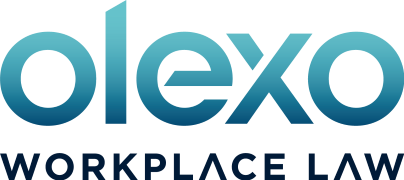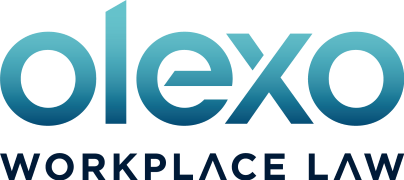Published 14 March 2016
Are you well set up for Workforce Success?
With the new business year now well underway, you will, no doubt, be seriously into workplace planning and strategising for the year ahead. Issues on the table might include: Is hiring more staff a priority? Is a new Enterprise Agreement on the cards? Are you considering restructuring to realign your business?
The following are useful pointers to bear in mind as you plan your next steps in workforce management.
1. Contracts and Policies
If you are planning to hire more staff, early preparation of contracts and policies will pay dividends. Do not be fooled into thinking that one style fits all, or that you can put off preparing documentation until after you find your ideal recruit. Such delay could run you into serious difficulty, especially if your employees or contractors work in quite different positions or are of varying seniority. Different contractual terms and considerations are required depending on the various characteristics of the role, the business, and the individual.
Award awareness and crucial terms
Making sure you know if your employees are covered by an industrial award is the starting point. Next priority is building a contract which takes into account the relevant award, if there is one, and which incorporates terms and conditions suitable for your business environment. Absolutely crucial terms to consider for new employees, leaving aside the all-important matter of pay, are the probationary period and the basis on which both parties can terminate the relationship.
A clearly defined probationary period, and process for review, will allow you to properly determine if the individual suits your company. Termination clauses need to set out not just the period of notice, but whether you can immediately dismiss the employee or contractor and pay them in lieu of notice. A list of circumstances in which dismissal, without any notice, can occur also needs to be nutted out.
Other terms you need to consider are post-employment obligations and restrictions, particularly regarding confidential information, intellectual property, “non-competes” and restraints. These will vary drastically depending on the type of role and industry. Employees who are senior and can be seen by clients as the ‘face of the company’ can be particularly important to restrain for some period from post-employment solicitation. See for example HRX Holdings P/L v Pearson where a senior employee was successfully restrained. Ideally, these obligations should be drafted by an expert otherwise you risk having them found to be partially invalid, not covering the right activities or, simply, unenforceable at the critical time.
Beware the Policy Trap
Brevity and clarity are at the essence of sound workplace policies. Creating weighty tomes that no one will read or follow is a waste of time and legally risky. Recent case law has shown that the courts are increasingly willing to read company legal obligations into these documents to the detriment of businesses. You should therefore be alert to not include terms in policies placing obligations on your company which are onerous, unrealistic or inflexible. See for example Romero v Farstard Shipping, where a company was found, due to the language of its workplace harassment and discrimination policy, to not have complied with this document and accordingly to have breached the employee’s contract.
2. Enterprise Agreements
Enterprise Agreements can be very useful tools for some businesses in workforce planning. If your employees are covered by multiple awards or you are looking to stabilise labour costs over the next three to four years an Enterprise Agreement is well worth considering.
What is an Enterprise Agreement?
An enterprise agreement (EA) is a legally enforceable arrangement at the workplace level between an employer and a segment of its employees (i.e. all staff except, usually, senior management or an otherwise definable section). To implement an EA, first a document must be drafted which complies with the Fair Work Act 2009 (Cth), then a process of bargaining with employees has to be entered into. Then follows a vote on the EA document before it can proceed to be approved and implemented by the Fair Work Commission.
Many employers are frightened off EAs due to the initial work required in bargaining with employees and then getting the support of more than 50 percent of those that vote on the agreement. However, in many workplaces the bargaining process can lead to a useful openness of workforce planning issues and can be a positive experience. During bargaining, employees often raise concerns that have not even been thought about at the management level, potentially leading to greater awareness and innovation. Bargaining does not have to be onerous. A fairly set and agreed timetable can usually be pursued to give the Employer certainty about timing and the resourcing required for such bargaining.
What benefits could an Enterprise Agreement bring to Your Business?
Benefits that I regularly see clients gaining as a result of implementing enterprise agreements include:
- HR, administrative and financial certainty: – knowing what the terms and conditions in place with employees are that must legally be complied with. These Agreements can use simple and easy to understand language that is suitable to your business.
- Improve workplace culture: – employers and employees have a formal opportunity to open up to each other and to discuss shared aims. This can only be beneficial. Broader cultural aims and elements of the business can be included in the Enterprise Agreement.
- Planning certainty: – not only is this good for any business in terms of being able to project the labour force costs for the next three to four years as set out in the EA but also if you tender for work or are looking to sell your business this can be very useful and attractive to buyers or clients.
- Flexibility: – in trade-off for granting employees entitlements which are above base legal entitlements more adaptability can be implemented to suit your business and client needs.
- Increase Productivity: – EAs can be targeted to increase productivity or efficiency thereby improving your business and incentivising employees.
- Set the Scene: – EAs can lay out important procedures and therefore act as a go- to document for employees and employers without further document preparation or work being required.
3. Restructuring
Workforce changes can be onerous at the best of times, let alone when you have to tell people their role no longer exists. While making people redundant is, to most, a grim task, it can often be necessary and can result in drastic improvements to your bottom line and business direction.
Process to enact redundancies
Carrying out redundancies does not have to be time- consuming or nightmare- inducing. Knowing what consultation obligations are required is important and having in place a procedure that is fair but efficient takes most of the risk and much of the worry out of the process.
If the relevant employees are covered by an industrial award, a consultation process must be undertaken providing information, prior to a final decision being made, on why the redundancies may occur. You must also listen to and consider any suggestions that an employee might have to avert or reduce the impact on them. Ultimately, if the decision proceeds, you will need to make the appropriate redundancy payments applicable under the National Employment Standards as well as providing notice to the employees.
One of the most common errors I see are companies making a person redundant rather than dealing properly with issues of behaviour or performance. This could land your business in hot water with the Fair Work Commission and, potentially, the tax office. To be lawful, a redundancy must be a genuine case of a role no longer being required to be completed (or being subsumed into another role.)
With forethought and preparation, you can set up your workforce for a productive, stress-free year. Inertia is common when it comes to workplace planning. If you engage in intelligent, well-informed planning of staffing matters this will give your business real advantages over the competition.
The content of this publication is general in nature and provides a summary of the issues covered. It is not intended to be, nor should it be relied upon, as legal or professional advice for specific employment situations. PCC Employment Lawyers recommend that specialist legal advice should be sought about specific legal issues.


